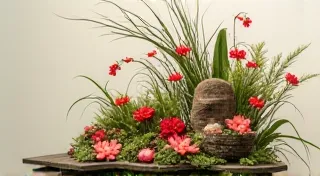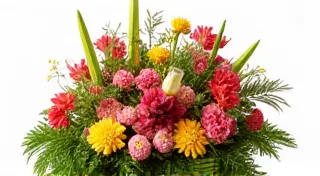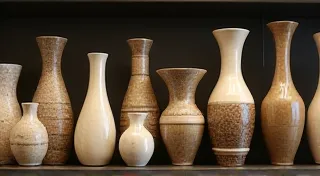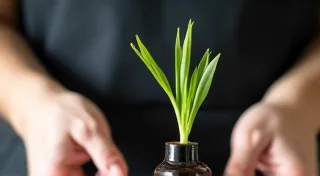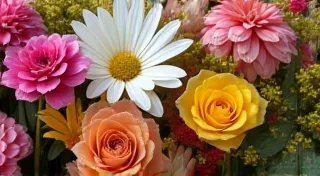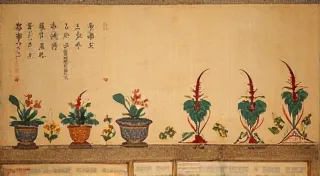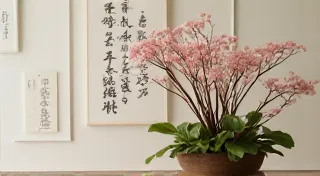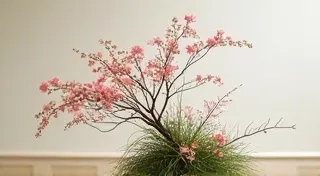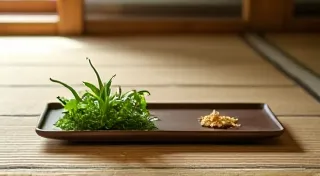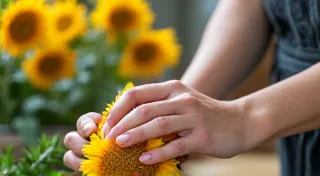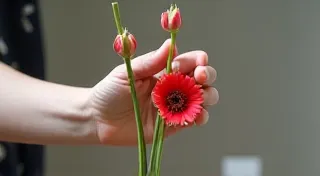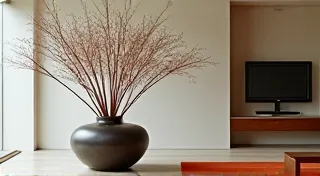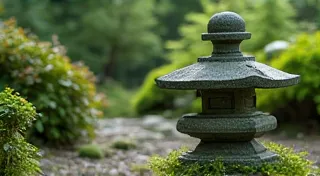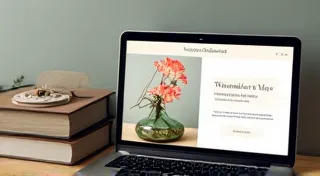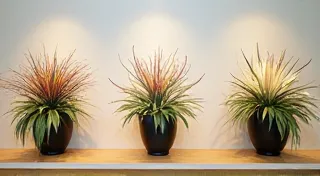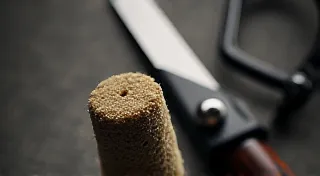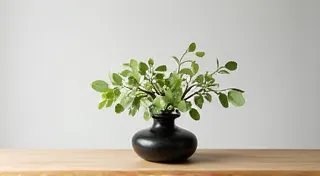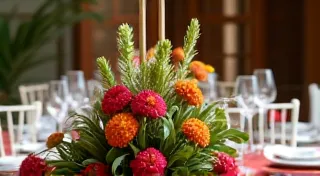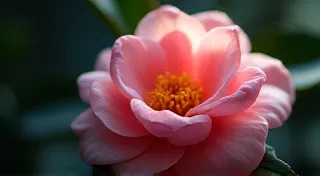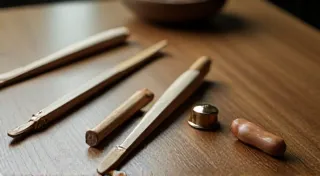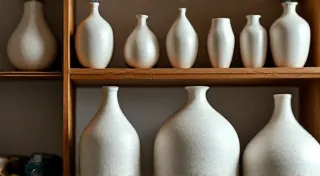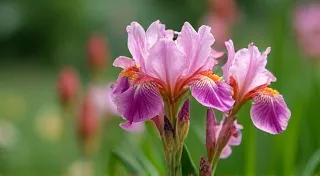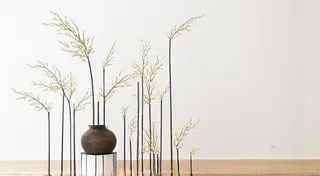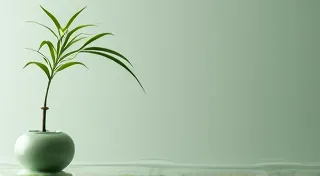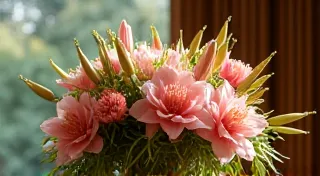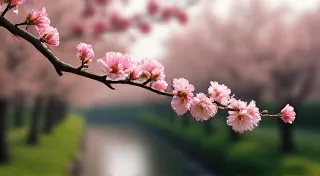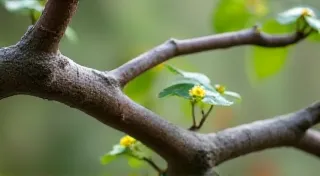Learning Traditional Japanese Flower Arranging (Ikebana)
Beginner-friendly guides and tutorials for learning the art of Ikebana. A comprehensive resource for understanding and mastering this ancient and beautiful practice.
Discover the Ancient Art of Ikebana
Welcome to the world of Ikebana, the captivating Japanese art of flower arranging! More than just placing flowers in a vase, Ikebana is a profound practice rooted in philosophy, spirituality, and a deep appreciation for nature. This website is your gateway to understanding and mastering this beautiful traditional art, regardless of your experience level. Whether you're a complete novice or looking to deepen your existing knowledge, you’re in the right place. It’s also a unique form of floral design, diverging significantly from Western approaches.
For centuries, Ikebana has been a vital part of Japanese culture, evolving from simple offerings to shrines to the complex and expressive forms we see today. Its history is intertwined with the development of Buddhism and Shintoism, reflecting the deep reverence for the natural world that permeates Japanese thought. Let's embark on a journey to explore this elegant discipline and uncover its secrets. Before we delve into the practical aspects, let's first consider what is Ikebana. If you're looking for a beginner's guide, check out What is Ikebana? A Beginner's Guide to Japanese Flower Arranging. This art form isn’t just about aesthetics; it's a meditative practice, a spiritual connection, and a celebration of the fleeting beauty of life.
A Path to Harmony and Balance
At its core, Ikebana is about achieving balance, harmony, and a profound connection with nature. The name itself, derived from ikae-bana, meaning "living flowers," hints at the art's emphasis on the vitality and transient beauty of plant life. Unlike Western floral design, which often prioritizes a profusion of blooms, Ikebana emphasizes line, form, and the intentional use of negative space – a concept known as Ma. Understanding the importance of space (Ma) in Ikebana design is fundamental to creating truly meaningful arrangements. Learn more about this in The Importance of Space (Ma) in Ikebana Design. Ma isn’t simply empty space; it’s an active element that shapes the arrangement and directs the viewer's eye. It creates a sense of breathing room and allows the individual elements to resonate more powerfully.
The philosophy behind Ikebana goes far beyond mere aesthetics. It’s a form of meditation, allowing practitioners to find peace and clarity through mindful interaction with natural elements. The deliberate selection of materials, the precise placement of each stem, and the conscious effort to create a balanced composition all contribute to a state of focused awareness. If you're intrigued by the idea of merging creativity with mindfulness, you should explore Ikebana as Meditation: Cultivating Mindfulness Through Flower Arranging and Ikebana and Mindfulness: Finding Peace Through Floral Art. Consider the The Philosophy Behind Ikebana: Finding Harmony and Balance that underpins the art form. It fosters a deep appreciation for the impermanence of all things – a key tenet of Buddhist philosophy – and encourages a sense of interconnectedness with the natural world. The act of creating an Ikebana arrangement becomes a form of prayer, a way of expressing gratitude for the gifts of nature.
Getting Started: Your First Steps in Ikebana
Feeling overwhelmed? Don’t be! We’re here to guide you through every step of the process. Our website provides comprehensive resources for beginners, from essential tools and materials to fundamental techniques. Start your journey with Ikebana for Beginners: Your First Simple Arrangement, and learn what essential Ikebana tools and materials for beginners you’re going to need in Essential Ikebana Tools and Materials for Beginners. Don't feel pressured to recreate elaborate designs immediately. Begin with simple arrangements, focusing on the basic principles of line, form, and balance. Experiment with different materials and techniques, and allow yourself to learn from your mistakes. The beauty of Ikebana lies not in perfection, but in the process of creation.
Understanding the Foundations: History, Schools, and Symbolism
To truly appreciate Ikebana, it's important to understand its historical context. The The History of Ikebana: Tracing Its Roots reveals a fascinating evolution spanning centuries and influenced by various cultural and religious movements. The earliest forms of Ikebana, known as Rikka, were highly formalized arrangements that reflected the grandeur of Buddhist temples. Over time, these styles evolved into more simplified and naturalistic forms, reflecting changing aesthetic preferences and cultural influences. Understanding this historical evolution provides a deeper appreciation for the nuances of different Ikebana styles.
Furthermore, Ikebana is not a monolithic practice. It’s comprised of several distinct schools, each with its own unique style and principles. Explore the The Three Main Ikebana Schools: Ohara, Ikenobo, & Sogetsu and discover their differences. The Ikenobo school is considered the oldest and most traditional, while the Ohara school emphasizes a more naturalistic and open style. Sogetsu, the youngest of the three schools, is known for its innovative and experimental approach to Ikebana. Each school offers a unique perspective on the art form, and students are encouraged to explore different styles to find what resonates with them.
The language of flowers in Ikebana is rich with symbolism. Each element – from the choice of flowers to the angle of a branch – carries a specific meaning. Understanding Understanding the Symbolism of Flowers in Ikebana and Understanding the Symbolism in Ikebana: Meaning Behind the Elements adds another layer of depth to the creative process. For example, pine branches often symbolize longevity and resilience, while cherry blossoms represent the fleeting beauty of life. The skillful use of symbolism allows the artist to communicate complex emotions and ideas through the arrangement.
The Art of Selection: Flowers, Foliage, and Vessels
The selection of materials is a crucial aspect of Ikebana. The choice of flowers, foliage, and even the vase itself contribute to the overall message and aesthetic of the arrangement. Learn more about Selecting Flowers and Foliage for Ikebana. Consider the season, the symbolism of the materials, and the overall feeling you want to convey. A vibrant bouquet of summer flowers might evoke feelings of joy and abundance, while a sparse arrangement of winter branches might convey a sense of quiet contemplation. The vessel is also an integral part of the design. Traditional Ikebana often uses simple, understated vases that allow the beauty of the materials to shine through. The shape, color, and texture of the vase should complement the arrangement, creating a harmonious whole.
Explore Resources for Learning More About Ikebana. Don't limit yourself to traditional flowers. Consider incorporating unexpected materials such as twigs, stones, and even fruits and vegetables. The key is to create a balanced and visually appealing composition that reflects your personal style.
Special Occasions & Inspiration
Looking to create arrangements for celebrations? Check out Ikebana for Special Occasions: Celebrating Life's Moments and explore Ikebana in Modern Homes: Contemporary Arrangements. Think about the overall atmosphere and mood you want to create. A festive arrangement might incorporate bright colors and abundant blooms, while a more formal arrangement might use more subdued tones and elegant lines. The possibilities are endless!
Resources & Further Learning
Expand your creative horizons with Creating a Minimalist Ikebana Arrangement: Less is More and embrace the simplicity of less. Discover how to celebrate the seasons with Seasonal Ikebana: Arranging with Flowers of the Seasons. Unlock your artistic potential by exploring Combining Ikebana with Other Art Forms and blending traditional techniques with contemporary aesthetics.
Welcome to the world of Ikebana! We hope this website serves as your trusted guide on this beautiful and rewarding journey. Discover your unique floral design potential.
